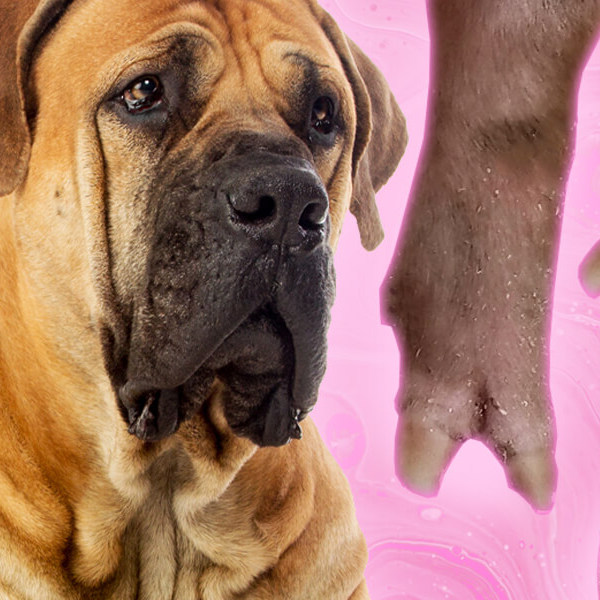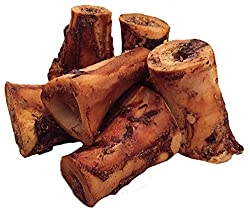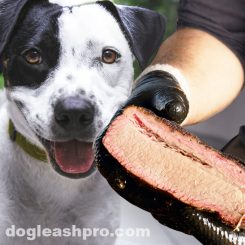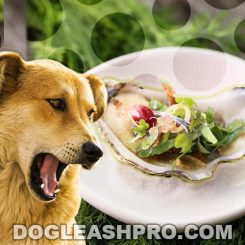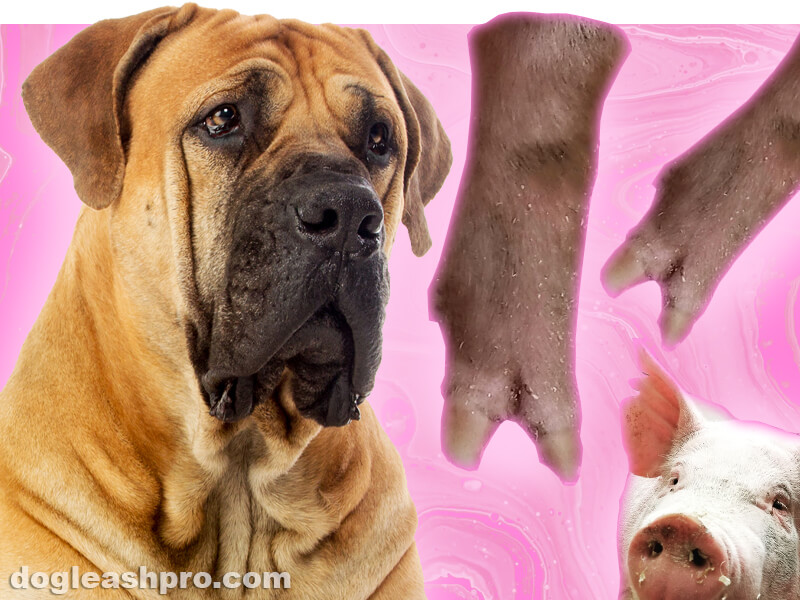
My mom made a traditional peanut and Pig’s feet soup yesterday. She used raw Pig feet, a little bit of Pork Rinds, peanuts, carrots, and ginger. As the soup was simmering, the smell covered the room and attracted my yellow Labrador’s attention. She sat anxiously watching and drooling.
Luckily, my mom didn’t use all of the Pig feet she bought. Seeing that my Labrador was well-behaved all day, I wanted to give her one but wondered if Pig feet is safe for dogs to eat.
Can dogs eat Pig feet? Yes, dogs can eat Pig feet, if and only if, the Pig feet are in their original raw form. Pig feet are packed with nutrients and protein, which makes them a great occasional treat for dogs. Chewing on the Pig feet bones can also help to promote good dental health in dogs.
Let’s dive deeper to find out how Pig feet can benefit our dog’s health and how to properly prepare them so that they are safe for canine consumption.
Table of Contents
Is raw Pig feet good for dogs?
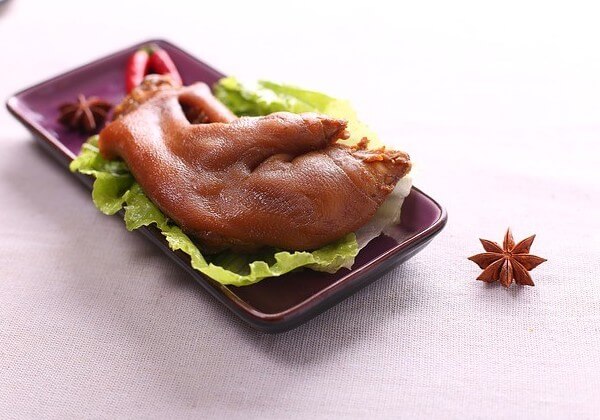
Yes, raw Pig feet are good for dogs as an occasional treat. However, it is crucial for dog owners to only feed their furry friends raw Pig feet. How you prepare it before giving it to your dogs is key to your dog’s health and safety.
Raw Pig feet for dogs
Here are a few things to keep in mind for your dog’s safety:
- In general, only allow your canine companions to eat raw Pig feet and raw bones.
- When the Pig feet are cooked, the bones can become a choking hazard if your pooch accidentally swallows them.
- Make sure the Pig feet bones are large enough so that your furry friends can’t swallow them.
What is Pig feet?
Pig feet are also known as pig trotters or pettitoe. This fatty yet tasty food is often enjoyed all around the world from Asian countries to Puerto Rico, United States, United Kingdom, and Norwegian. People all around the world enjoy Pig feet because it has a high collagen content when it’s cooked thoroughly.
Many pet owners feed their canine friends raw Pig feet as an occasional treat or snack. In recent years, raw Pig feet have become a favorite treat for dogs because it is affordable. Many dog food manufacturers make Pig feet treats so they’ve also become fairly accessible to dogs.
Although your canine friends may love this popular year-round Pig feet treat, we highly recommend that you avoid feeding this treat to your pups every day. We understand that the Pig feet may be widely available and cheap, but that doesn’t mean your furry friends should eat this regularly.
Do Pig feet provide health benefits for dogs?

Raw Pig feet provide numerous health benefits for dogs. Let’s explore each one below.
Pig feet are great for dogs that love to chew
If your canine companion is a heavy chewer or needs to chew on something in order to expend some build-up energy, giving them these raw meaty bones to chew on is extremely helpful.
Chewing on the raw bones can distract dogs from bad behaviors and give them something to do so they stay out of trouble and avoid boredom. Some dogs may resort to bad behaviors like chewing on expensive shoes or furniture around the house if they are bored or have a lot of build-up energy. Offering them a raw meaty bone can keep them occupied for hours.
If your pooch loves to chew, has a chewing habit, or needs something to do, giving them raw bones to chew on is a great idea. It will also satisfy their chewing habits.
Pig feet bones help promote good dental health in dogs
Chewing on Pig feet bones will not only help to keep your canine friends occupied with something to do, but this will also help to maintain strong and healthy teeth in dogs. Dogs with strong and healthy teeth will have healthy gum too.
When dogs gnaw on the Pig feet bones, the bones act like a toothbrush and will brush your pup’s teeth. This delicious treat will naturally remove the tartar buildup and plaque from your dog’s teeth.
In no time, your pooch will have strong and healthy teeth that are also sparkling clean!
Great source of essential nutrients and protein for dogs
Pig feet are loaded with both fat and protein. The essential nutrients and protein from Pig feet keep your furry friends energized and full.
Fun Fact: Another food that contains protein and nutrients is Fish Heads. Fish Heads are packed full of protein, nutrients, and omega-3 fatty acids. Similar to Pig feet, how you prepare them before giving them to your dogs is important.
How to prepare Pig feet for canine consumption
If you plan on giving your furry friends Pig feet as a treat or snack, always keep in mind of the following:
Human-grade raw meaty bones are best for dogs
We all want what is best for our canine friends and that includes providing them with high-quality food and treats. Raw Pig feet that you buy from the grocery store or poultry market are perfect because they are plain and do not contain preservatives.
Avoid feeding your pooch Pig feet that have been pre-packaged because the meat and bone are full of sulfite, a preservative to help maintain long shelf-life. Eating meat and bones that are full of preservatives can cause thiamine deficiency in dogs, which is dangerous.
Signs of thiamine deficiency include:
- Gastrointestinal upset.
- Weight loss.
- Loss of appetite.
- Neuromuscular weakness.
- Unequal pupil sizes.
If you plan to give your pooch Pig feet, make sure the bones are large enough so that your canine friends won’t be able to swallow them whole.
Dogs should only have raw bones
Never give dogs cooked meat products that contain bones. When bones are cooked, they become more brittle, stiff, and less soft. Dogs should only be fed raw bones since cooked bones can easily splinter.
Brittle bones can cause internal bleeding in dogs
If you give your dog cooked Pig feet bones, there’s a high chance that the bones are brittle and less soft. This means that the bones can break easily when your canine friends are gnawing on them and the tiny bone pieces may have sharp edges that can accidentally cut the inside of your dog’s mouth.
When this happens, you may notice your pup bleeding from his mouth. Also, the sharp edges from the bone can tear the soft tissues in your dog’s throat or intestinal lining and this can cause internal bleeding.
This is why it is crucial that you only give raw Pig feet to your four-legged friends.
Handy Hint: Be careful with what you leave on the kitchen counter. If you’re making lentil soup that requires Bay Leaves, make sure to keep them out of your dog’s reach. Bay leaves have sharp edges and accidentally ingesting them can potentially tear the soft tissue in your dog’s throat in addition to them being toxic to dogs.
How many raw Pig feet can dogs have?
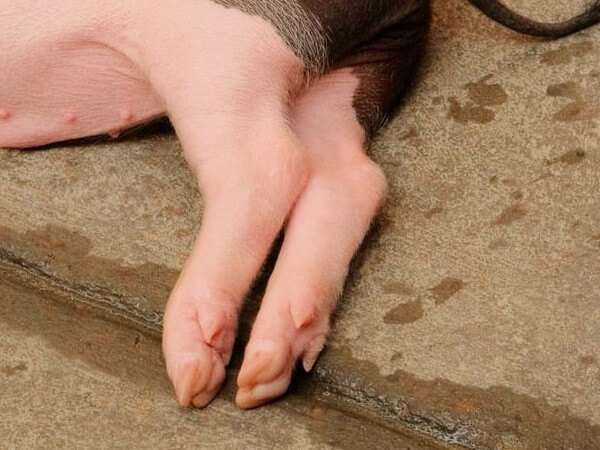
Since Pig feet are high in calories, it’s best to offer this tasty snack to your furry friends as an occasional treat. It’s best to feed your pooch just one raw Pig feet per week or every other week.
As with all dog treats, moderation is key. Don’t feed your pups too much Pig feet. When it comes to your dog’s daily calorie intake and treats, we highly recommend that you follow the 90/10 rule.
90% of your dog’s daily calorie intake should be from a well-balanced and complete diet. This means that the remaining 10% of their daily calorie intake can be from treats. Since Pig feet are calorie-dense, eating more than one raw Pig feet can tip over a dog’s daily calorie limit of 10% for treats.
Regularly eating Pig feet or eating too much of them can cause weight gain in dogs as well as other health problems.
Therefore, it’s generally safe to feed your pooch one raw Pig feet per week. However, do keep your furry friend’s size, weight, and breed in mind. If you’re not sure how many raw Pig feet you can feed your pooch, it’s best to consult with your vet.
Your vet knows your furry friends the best and should be able to provide you with a specific answer.
How about dehydrated Pig feet for dogs?
We advised that you avoid feeding your four-legged friends dehydrated Pig feet because they are cooked which means the PIg feet bones are more brittle, fragile, and less soft.
When dogs chew or gnaw on the dehydrated Pig feet, the bones can break easily and the sharp edges of the bones can splinter inside your dog’s mouth, causing bleeding in the mouth. The splintered bones can also cause internal tears and damage to the dog’s throat and intestines.
If you find dehydrated Pig feet that were not cooked prior to dehydration, then that should be fine for doggy consumption.
Can I give my dog smoked Pig feet?
No, if you’re eating smoked Pig feet with your family, it’s best to avoid feeding this leftover table food to your pooch. Smoked Pig feet is human food and not all human food can be shared with our canine companions. There are also several reasons why Smoked Pig feet are harmful to dogs.
Too much salt is harmful to dogs
Smoked Pig feet are delicious. This food satisfies the human taste buds because it is full of salt. There’s a lot of salt in smoked Pig feet because the salt helps to keep it from going bad. For this reason, the Smoked Pig feet have a high sodium level.
When dogs eat food with too much salt, they can get sodium ion poisoning. Signs of salt poisoning includes:
- Extremely thirsty.
- Frequent urination due to extreme thirst.
- Diarrhea.
- Vomiting.
- Fever.
- Seizure (in severe cases).
If you have to feed your pooch smoked Pig feet, make sure to rinse it first before giving it to your pooch. Doing so will wash away the salt and any seasoning or spices that were originally added onto the smoked Pig feet.
Fun Fact: Tamales is another food that has a high sodium content. For this reason, it’s best to avoid feeding your dog Tamales if you’re ever having this dish.
High-fat content can cause weight gain and pancreatitis in dogs
Smoked Pig feet contain high-fat content. Eating food or treats that are very fatty can cause weight gain in dogs and eventually lead to obesity. Regularly eating fatty food can also lead to pancreatitis in dogs.
If you notice your four-legged friends experiencing the following symptoms, you should stop feeding them smoked Pig feet immediately:
- Diarrhea.
- Vomiting.
- Loose stool.
- Yellow stool.
- Abdominal pain.
- Tender abdomen.
- Loss of appetite.
Canine-friendly bones for dogs
Some dog owners may prefer to stick to dog-friendly treats for their canine companions. If this is the case and you would rather get your furry friends dog bones that are safe for chewing, we highly recommend these marrow bones for dogs:
So, can dogs eat Pig feet?
As you can see from the information above, it’s fine for dogs to eat raw Pig feet as an occasional treat. One raw Pig feet a week or every other week should be fine since it does provide nutrients and protein to dogs.
However, since Pig feet have a high-fat content, it’s best to limit how much you’re giving your pooch. Eating too much Pig feet can cause a number of health issues including weight gain, obesity, and pancreatitis.
Make sure the Pig feet are in their plain and raw form. In general, do not feed your furry friends cooked meaty bones and always stick to raw bones. Do not add any seasoning or salt onto the Pig feet if you plan to feed them to your pups.
Related Questions
Yes, raw Pig feet are the best option for doggy consumption. Dog treats like plain raw Pig feet are safer for dogs to eat and chew on. They’re not loaded with preservatives, seasonings, or salt and the bones are hard.
Yes, dogs can eat Pigs feet, but make sure the Pig’s feet are raw and not cooked. Keep the Pig’s feet plain without any added flavor, seasoning, or salt.
DISCLAIMER: THIS WEBSITE DOES NOT PROVIDE MEDICAL ADVICE
The information, including but not limited to, text, graphics, images and other material contained on this website are for informational purposes only. No material on this site is intended to be a substitute for professional veterinary advice, diagnosis, or treatment. Always seek the advice of your veterinarian or other qualified health care provider with any questions you may have regarding dietary needs.
Resources:
https://www.delightedcooking.com/what-are-pigs-feet.htm
https://en.wikipedia.org/wiki/Pickled_pigs%27_feet

With over five years of specialized experience as an animal writer, my expertise lies in dog nutrition, health, behavior, grooming, and training. I am dedicated to delivering helpful and informative content that caters to the well-being of our furry friends. My primary goal is to empower pet owners with knowledge and ensure our canine companions thrive in health and happiness. In my free time, I love volunteering at local dog rescue centers.
